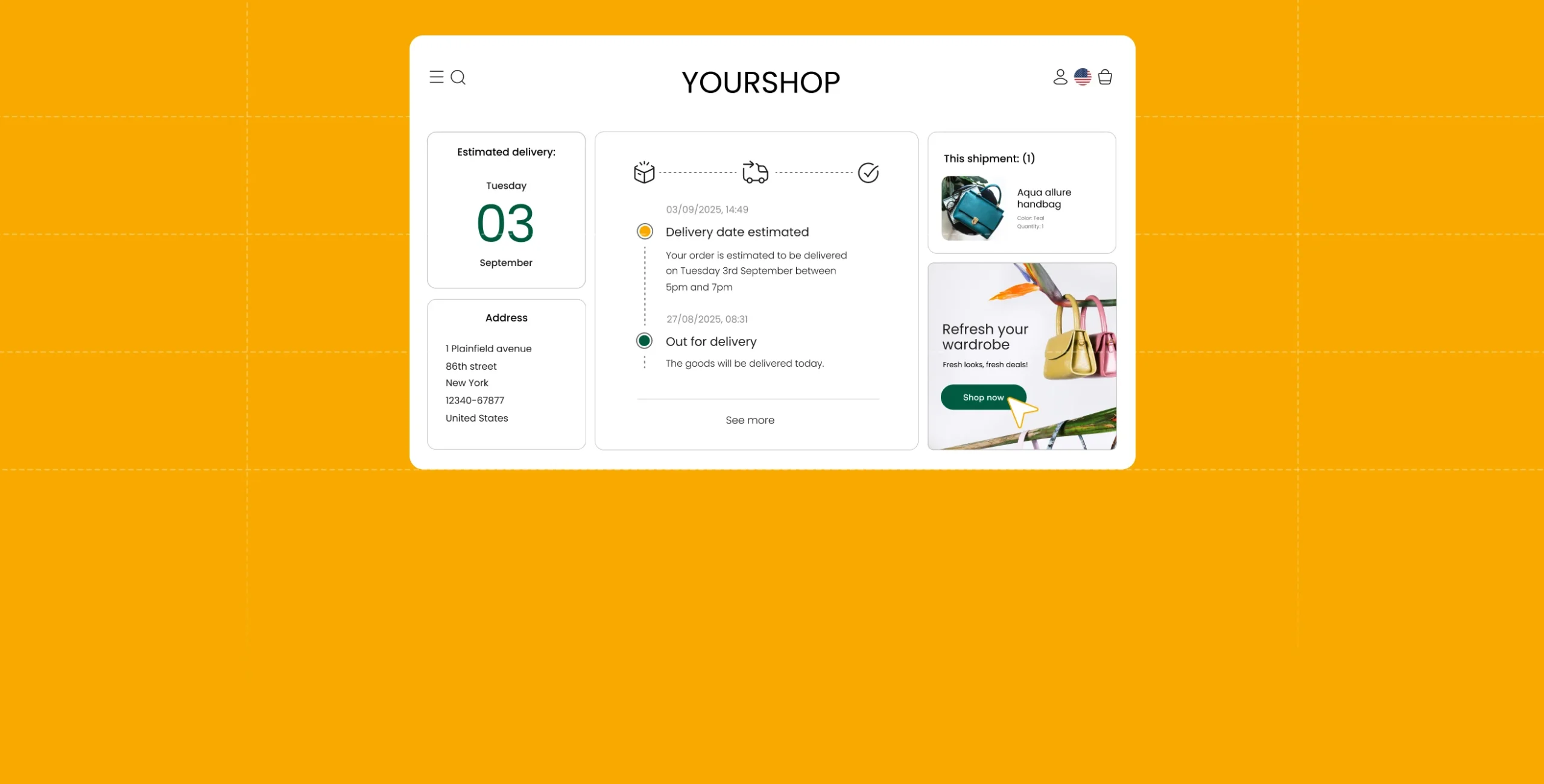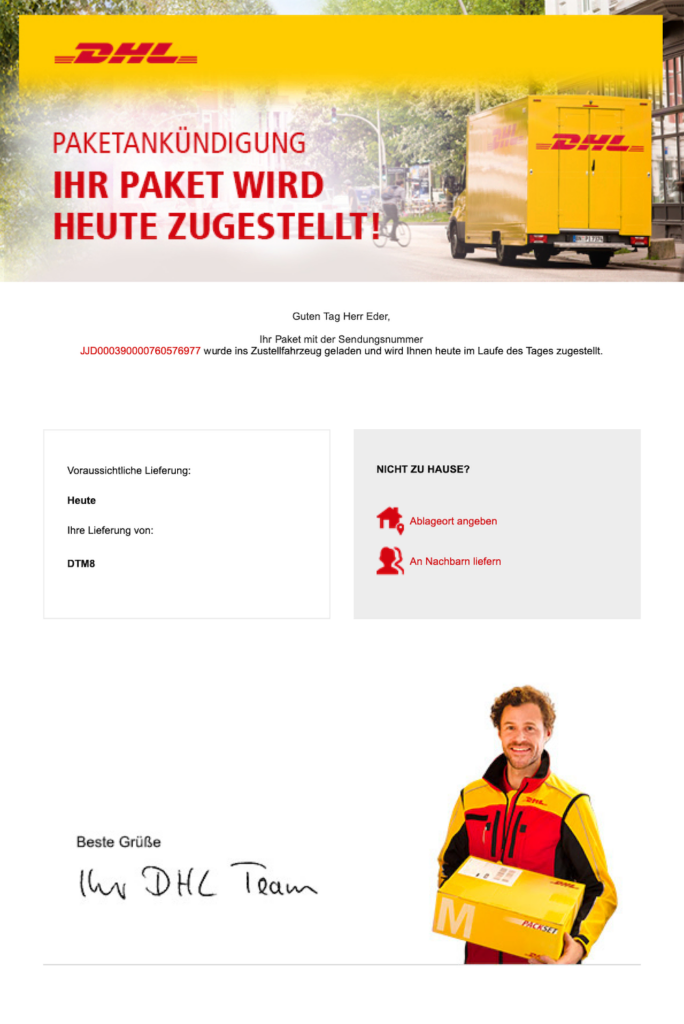Why parcelLab?
Discover why parcelLab is the go-to post-purchase partner for top retailers across the globe

Why parcelLab?
Discover why parcelLab is the go-to post-purchase partner for top retailers across the globe
Why parcelLab
Why top retailers choose parcelLab over the rest
AI and innovation
Transforming post-purchase with AI
PPX maturity curve
Discover where you stand on the curve
PPX Institute
Turn transactional relationships into customers for life
Post-purchase audit
Experience your brand the way your customers do
Platform
Platform support
PLATFORM
Meet the platform
The industry’s first and only PPX platform tailor-made for retailers
WHAT'S NEW
Benchmarking
Benchmark against the industry in real-time
Copilot
Turn delivery anxiety into customer satisfaction with AI
AI Email Editor
Streamline operations and reduce complexity with AI-powered automation
Campaign Manager 2.0
Run campaigns that drive revenue
Smart Survey
Collect feedback and drive improvements


OVERVIEW
Enhance delivery experience
Seize control of your delivery experience
CAPABILITIES
Track & communicate
Keep your customers engaged
Set up a branded tracking portal
Keep customers in your ecosystem
Create personalized journeys
Deliver the right message, at the right time
Run targeted campaigns
Create campaigns that convert
Predict delivery delays
See delivery issues before they happen and take proactive action
Streamline claims management
Reclaim time, revenue, and customer trust
Resolve customer inquiries
Empower your customer service teams

OVERVIEW
Make returns seamless
Transform customer dissatisfaction into revenue retention by digitizing returns and exchanges.
CAPABILITIES
Track and inform returns status
Create a seamless returns experience that retains customers
Self-service returns portal
Let customers register returns with ease
Personalize returns journey
Encourage exchanges over refunds
Forecast returns volume
Anticipate return patterns before they happen
Offer flexible returns
Give your customers versatile return options that cater to their preferences


OVERVIEW
AI-powered post-purchase
Optimize every post-purchase interaction with parcelLab's AI agents
CAPABILITIES
Execute with AI
Harness the power of AI agents
Predict with AI
Stay ahead with real-time insights & forecasts
Simplify with AI
Cut complexity & streamline operations
Personalize with AI
Deliver tailored experiences

Solutions
Reduce WISMO & WISMR calls
Keep customers in the loop & support smarter
Turn returns into revenue
Make returns seamless, maximize revenue
Manage complex post-purchase scenarios
Handle exceptions, claims & logistics
Optimize post-purchase campaigns
Boost engagement & drive conversions
Enhance personalization and engagement
Create 1:1 tailored experiences
Resources
Company

Why parcelLab?
Discover why parcelLab is the go-to post-purchase partner for top retailers across the globe
Why parcelLab
Why top retailers choose parcelLab over the rest
AI and innovation
Transforming post-purchase with AI
PPX maturity curve
Discover where you stand on the curve
PPX Institute
Turn transactional relationships into customers for life
Post-purchase audit
Experience your brand the way your customers do
PLATFORM
Meet the platform
The industry’s first and only PPX platform tailor-made for retailers
WHAT'S NEW
Benchmarking
Benchmark against the industry in real-time
Copilot
Turn delivery anxiety into customer satisfaction with AI
AI Email Editor
Streamline operations and reduce complexity with AI-powered automation
Campaign Manager 2.0
Run campaigns that drive revenue
Smart Survey
Collect feedback and drive improvements

OVERVIEW
Enhance delivery experience
Seize control of your delivery experience
CAPABILITIES
Track & communicate
Keep your customers engaged
Set up a branded tracking portal
Keep customers in your ecosystem
Create personalized journeys
Deliver the right message, at the right time
Run targeted campaigns
Create campaigns that convert
Predict delivery delays
See delivery issues before they happen and take proactive action
Streamline claims management
Reclaim time, revenue, and customer trust
Resolve customer inquiries
Empower your customer service teams

OVERVIEW
Make returns seamless
Transform customer dissatisfaction into revenue retention by digitizing returns and exchanges.
CAPABILITIES
Track and inform returns status
Create a seamless returns experience that retains customers
Self-service returns portal
Let customers register returns with ease
Personalize returns journey
Encourage exchanges over refunds
Forecast returns volume
Anticipate return patterns before they happen
Offer flexible returns
Give your customers versatile return options that cater to their preferences

OVERVIEW
AI-powered post-purchase
Optimize every post-purchase interaction with parcelLab's AI agents
CAPABILITIES
Execute with AI
Harness the power of AI agents
Predict with AI
Stay ahead with real-time insights & forecasts
Simplify with AI
Cut complexity & streamline operations
Personalize with AI
Deliver tailored experiences

Reduce WISMO & WISMR calls
Keep customers in the loop & support smarter
Turn returns into revenue
Make returns seamless, maximize revenue
Manage complex post-purchase scenarios
Handle exceptions, claims & logistics
Optimize post-purchase campaigns
Boost engagement & drive conversions
Enhance personalization and engagement
Create 1:1 tailored experiences
Resources
Company

All retailers preach that they want to offer their customers an optimal shopping experience, but suddenly stop doing so after the order has been sent. Shipping is a very emotional phase for the customer and often has an influence on whether or not the customer will order from the retailer again in the future. When it comes to shipping, there is one major problem that even the top 100 German online stores have not yet realized: Retailers leave the track & trace to the shipping service provider. They therefore have no influence on what information they pass on to their customers at what time.
Many customers, especially at present and in the future, do not shop simultaneously at just one online store. This leads to the fact that they are waiting not only for one package, but for several orders from different online stores. However, this often also means that they receive several shipping messages as well as tracking links from a single shipping service provider, such as DHL or Hermes, at the same time. Where does one even know which link belongs to which package or online retailer? It’s also quite possible that one package is needed more urgently than the other and the customer is desperate to know when it will arrive. Now he has to click through a multitude of e-mails to finally find the right link to the right store. The next time, of course, he has forgotten this again and the search game starts all over again.
However, it is not always as devastating as described above, because often the company to which the store belongs is mentioned in the dispatch email. However, if you don’t know which company which store belongs to, this unfortunately often doesn’t get you anywhere and Google has to be consulted. For this reason, an integration of the logo of the respective online store as well as information about the ordered products can not hurt.

Shipping messages should be enriched with important information for the customer. (Source: DHL)
The customer is already annoyed, although the retailer has actually done nothing wrong. However, that is not all. If you then (possibly) found out which tracking belongs to which online store, it is often still not clear when the package will arrive and whether there will be delivery delays. Since the retailer itself does not decide what information it sends to its customers during shipping, they usually do not know what happens to their package, but only receive the information provided by the logistics provider.
Why do online retailers pass on this important customer contact point to the shipping service provider, and how does it actually look for the German top 100 online stores? Actually, they should have already recognized and implemented this opportunity to optimize their customer experience?
Our E-Commerce Shipping Study 2023 shows: Nine of the top 100 German online stores do without a tracking link in the shipping message altogether. Although this is an improvement on the previous year (when there were 13 retailers), this should not really be the case for any of the most successful German stores. 61 percent of the stores leave the track & trace to the shipping service provider and thus cause the problem already mentioned above – the customer is confused and may receive several tracking links from a shipping service provider.

Nine merchants do not integrate a tracking link into their shipping messages.
66 percent of Germany’s top 100 stores leave their customers alone during shipping and either do not communicate at all or communicate exclusively via the logistics provider. A lot of potential is being wasted here. After all, 30 percent of retailers communicate with their customers themselves and thus have the opportunity to decide for themselves when and how they want to share which information with the customer.
If you haven’t taken your shipping communications into your own hands by now (and unfortunately, that’s a lot of online stores), you’re giving away a lot of potential. Many retailers are not aware of the benefits of personalized and self-directed shipping communication. From strengthening their own brand to reducing customer service inquiries and increasing repurchase rates – personalization in the shipping process pays off.
At our customer True Classic, 29% increase in revenue per email sent after implementing our solution.
At Granit Parts, the parcelLab solution resulted in a significant reduction in customer service inquiries. Inquiries via telephone decreased by 20 percent and inquiries via email decreased by 15 percent.
MediaMarktSaturn also achieved a open rate of 71 percent by personalizing its shipping messages.
If you want to avoid confusion or even annoyance among customers, you shouldn’t skimp on optimizing the customer experience in the shipping process either. The highly praised shopping experience should not end after clicking the buy button. Shipping offers retailers a lot of potential to increase their sales and offer their customers an all-around positive shopping experience.
Have you already downloaded our E-Commerce Shipping Study 2023? Find out how the top 100 German online stores perform in the areas of checkout, shipping and returns.
An error has occurred, please try again later.An error has occurred, please try again later.
By submitting the form, you agree to receive marketing information according to our Privacy Policy. You can unsubscribe at any time.